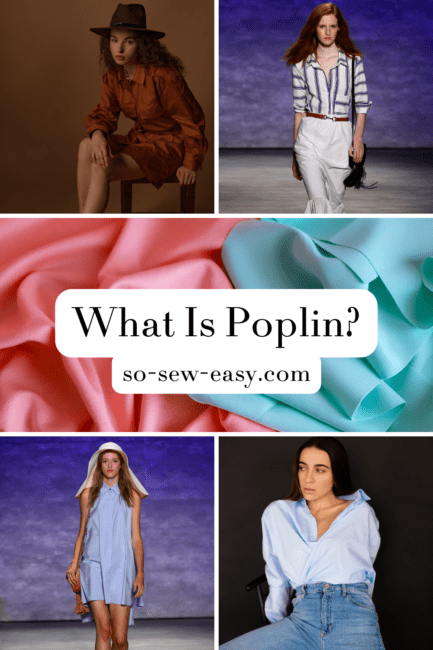
Today, I'm excited to shine the spotlight on a timeless classic that has graced the fashion world for centuries – the poplin fabric. Known for its distinctive texture and versatile uses, poplin has etched itself deeply into the tapestry of fashion and textile history. Let's take a closer look at what poplin fabric is, its historical relevance, how it's used today, and finally, some stylish tips on how to don this elegant fabric.
What is Poplin Fabric?
To understand poplin, we must delve into its unique weave. This is a plain-weave cotton fabric, which means the warp and the weft threads cross over and under each other one at a time. The resulting fabric is smooth, lightweight, and durable, with a subtle sheen that comes from the slight ridge effect caused by a thicker yarn under a finer one. Though traditionally made from silk and wool, cotton and cotton-polyester blends have now become common, offering the same soft and lustrous feel, but with increased versatility and affordability.
A Thread through Time: The History of Poplin Fabric
The origins of poplin weave can be traced back to 15th-century France. Originally named “papelino”, it was first produced in the silk-weaving city of Avignon. The fabric was named after the papal residence, the Papal States, indicating its prestige and association with ecclesiastical luxury.
Poplin transitioned into everyday fashion during the British industrial revolution when cotton and other materials became more readily available. Its durability and relative affordability made it popular among all social classes. Throughout the 20th century, the fabric became increasingly prominent in women's fashion, contributing to the creation of many iconic styles.
Poplin in Practice: Three Important Uses
- Shirting: One of the most common uses of poplin is in making shirts. Its smooth texture, combined with its durability, makes it an ideal fabric for both casual and formal shirts. It maintains a crisp, structured look while being comfortable to wear, even in warmer climates.
- Summer Clothing: Poplin's lightweight nature makes it perfect for summertime clothing. It is commonly used in creating dresses, blouses, and lightweight pants. Its ability to drape well, combined with its breathability, makes it a popular choice for chic, comfortable summer fashion.
- Home Decor: Beyond the realm of clothing, poplin has found favor in the world of home décor. Its sturdiness and the ease with which it can be printed upon make it an excellent choice for items like cushions, quilts, and even wall hangings.
Comparing Poplin to Other Similar Fabrics
Poplin, with its unique weave and characteristics, shares its space in the textile world with a few other similar fabrics. Let's delve into a comparison of poplin with three such materials: broadcloth, twill, and chambray.
Poplin vs. Broadcloth
Broadcloth and poplin are often compared due to their shared plain weave. Both fabrics offer a smooth, lustrous surface, and a lightweight, breathable quality. However, a key difference lies in their texture and sheen. Broadcloth typically has a very uniform, almost glossy surface and a softer feel, thanks to its symmetrical thread count. Poplin, on the other hand, uses a thicker weft yarn, which gives it a more pronounced ridge texture and a subtle sheen.
Stylistically, broadcloth leans towards the formal side, making it a go-to for dress shirts, whereas poplin’s crisp texture finds favor in both casual and formal attire.
Poplin vs. Twill
Twill is a type of weave that features a pattern of diagonal parallel ribs, produced by passing the weft thread over one or more warp threads, then under two or more warp threads, and so on, with a “step” or offset between rows to create the characteristic diagonal pattern. This is distinctly different from the plain weave of poplin.
The structure of twill weave imparts it with a heavier, sturdier feel than poplin. It drapes well and is resistant to wrinkles, but it doesn't offer the same lightweight, breathable quality as poplin, making it more suitable for cooler climates. Twill is often used in jeans, jackets, and work uniforms due to its durability.
Poplin vs. Chambray
Chambray, like poplin, is a plain-weave fabric. However, while poplin has a more lustrous appearance due to the difference in yarn sizes, chambray has a more matte finish and a slightly more rugged texture. This is because chambray uses a colored warp and a white weft, giving it a distinctive, ‘heathered' appearance.
Chambray tends to be slightly heavier than poplin but is also known for its softness and breathability. It is often used in more casual or workwear-style garments, like shirts, dresses, and children's clothes.
Styling Poplin Garments
Styling poplin can be as versatile as the fabric itself. Here are a few tips to make the most of your poplin pieces:
Embrace the Crispness
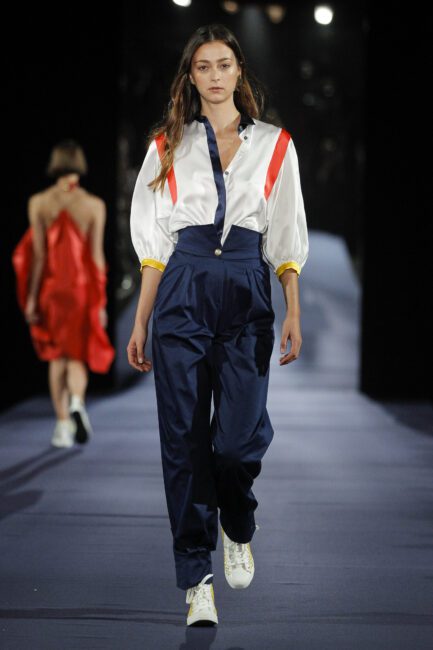

Poplin shirts are loved for their crisp, clean lines. Pair a tailored poplin shirt with a sleek pencil skirt or well-fitted trousers for a sophisticated work outfit.
Casual Chic
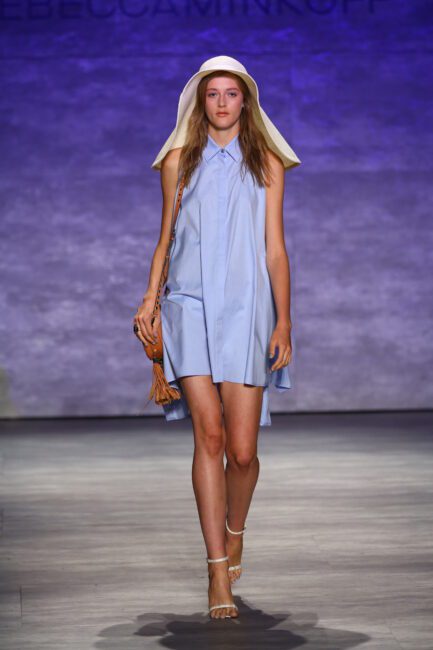

For a relaxed summer look, consider a poplin dress or blouse. It can be paired with sandals and a wide-brimmed hat for a perfect beachside ensemble.
Layers and Textures
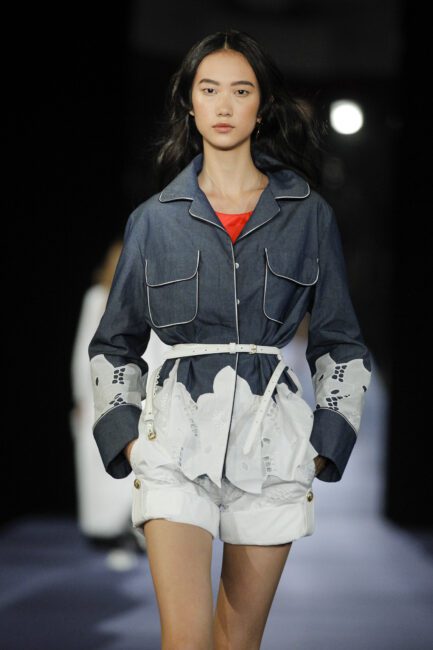

Use the smooth texture of poplin as a contrast to more textured fabrics. A smooth poplin shirt can look great under a chunky knit sweater or paired with a tweed blazer.
Accessorize
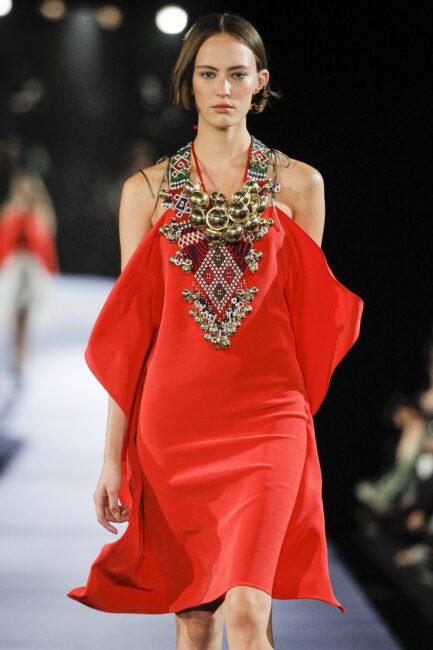

Poplin's simplicity makes it the perfect backdrop for statement accessories. Bold necklaces, vibrant scarves, or even a pair of standout earrings can bring a poplin outfit to life.
In the world of fabrics, poplin undoubtedly holds a place of honor. Its historical relevance, coupled with its timeless appeal, make it a staple in any sewing enthusiast's fabric stash. So the next time you're looking for a versatile, durable, and ever-stylish fabric, remember – poplin's got you covered!








I enjoyed this article. I have long heard of poplin but have never read an article explaining the weave and attributes of it. Also learining about broadcloth and chabmbrey and how they differ from each other is great. I have never been quite sure if the fabrc I chose for a specific garment would turn out as I see it in my head, often I am disappointed. This little lesson will help me alot, especially now since I have been doing more online shopping. Thank you for your article. I have been sewing for years and am sadly poorly informed on the fabrics I use, my own fault but I will watch for more articles
Maggie